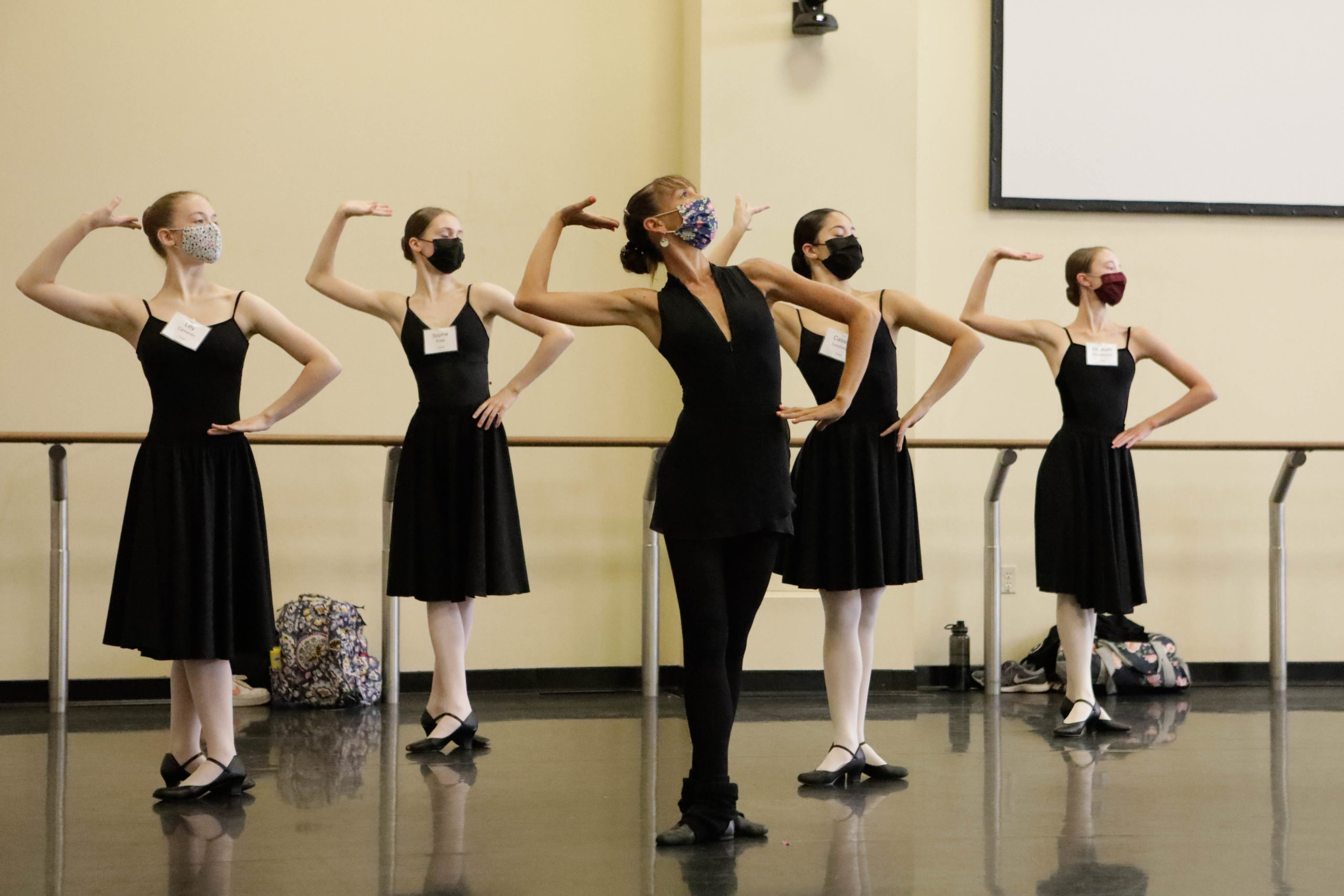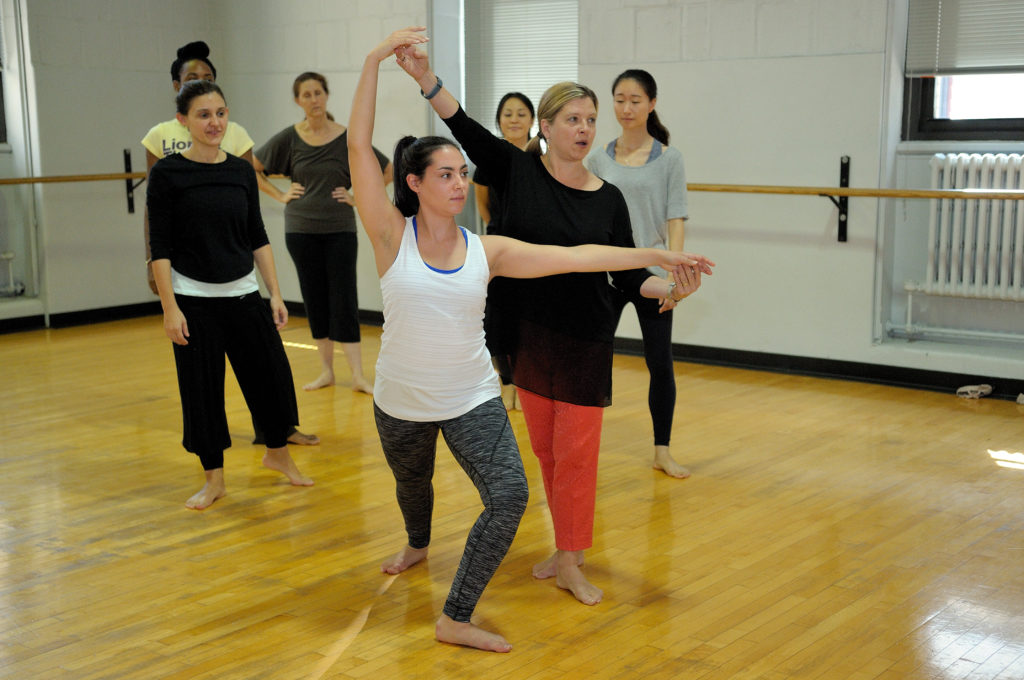
When asked about the importance of teaching artistry, Deborah Damast, director of NYU Steinhardt’s dance education program, quotes her husband, Tom Patrick, a former Paul Taylor dancer: “If you teach skills and technique without allowing for expression and artistry, you might as well be training them [students] to be bricklayers.”
With so much of dance education so focused on technical goalposts, artistry can feel like an elusive concept, or something “extra” that teachers simply don’t have time for. “But if that’s never a part of a child’s classes, how do we expect young dancers to suddenly embody a role? How do we expect them to be choreographers?” asks Damast.
She also points out that the high drop-off rates after creative movement classes could be due to the sudden shift away from creativity and artistry and towards more rote technical learning. “Maybe they give up because they don’t see dance class as what they thought dance was, which is like dancing at home and being artistic and creative,” says Damast. “If you re-prioritize, you might actually get a richer group of students.”
Be intentional about incorporating artistry with these tips, and give your students a fuller, more well-rounded dance education.
What Is Artistry?
There are likely as many definitions of artistry as there are dance artists, points out Barbara Bashaw, the executive director of the Arnhold Institute for Dance Education Research, Policy & Leadership at Teachers College, Columbia University.
For Damast, artistry is “a process—making choices, discovering, exploring, visioning, finding your own voice and your perspective.” For Carmela Gallace, a New York City–based ballet and character teacher who teaches at American Ballet Theatre, The Ailey School and elsewhere, it’s “a true expression of what’s inside—it’s how the soul speaks.”
Your students will have their own conception about what artistry is too, and Bashaw suggests that you ask them about it. “They’re going to come with prior notions about dance and artistry from their own cultural context,” she says. Making time for students to share what artistry means to them—whether before class, during class or through homework assignments—is key, says Bashaw.
Remember that your students have an innate artistry. “Children are not waiting to be artists,” says Bashaw. “Children are artists, and we’re here to facilitate their developing artistry.”

Create a Safe Space
While the creativity and vulnerability that comes with tapping into artistry may come naturally for younger students, older, more self-conscious students may require more support.
“It’s important to create a psychologically safe environment for students to feel comfortable enough to express what is inside, given the vulnerable nature of revealing emotions,” says Gallace. For her, this means building students’ confidence by praising them for being expressive, and being careful not to give any feedback that could close a student off.
Gallace also models what she expects of her students by demonstrating full-out throughout class, and showing that it’s OK to take risks and even be a little weird. “I put it all on the table—I make strange vocalizations, I like to be kooky,” she says. “It gives students the freedom and license to feel like they can do the same, and a domino effect happens.”
Merge Artistry With Technique
It’s tempting to see artistry and technique as two separate ends on the spectrum of dance education. But recognizing that they are actually deeply connected is essential for making artistry a seamless part of your students’ learning.
“Technique helps facilitate artistic expression,” says Gallace. “A turn of the head sends a completely different message than a tilt of the head. A développé with resistance will give a different emotion than one that is sharp and staccato. Different dynamics and qualities in the movement are the extension of what’s going on inside.” Gallace likes to focus on the fingertips, palms, breastbone and eyes, as “they are some of the central areas where energy exits the body and communicates outwards,” she says.
Damast imagines this merging of technique and artistry as something that can happen on a curriculum level, too. “I like this idea of trying to get out of the silos of ‘Here’s my technique class,’ ‘Here’s my choreography class,’ ‘Here’s my improv class,’ ‘Here’s my comp class,’” she says. “I think great teachers can synthesize that so that you can see the connections between making dances and performing dances and working on your craft.”
Teach Better Performers
Damast remembers that in her training “We were asked to layer on the artistry when it came time for performance,” she says. “It was icing on the cake, like if you do all these technique classes, then you can do this role in this ballet, and then you’re suddenly allowed to embody a character. It was never connected, and I really think it has to be connected.”
If you’re approaching performance-time and your students are panicking about going onstage, it may be a sign that you need to start thinking about artistry and performance quality earlier, says Damast. She also suggests helping students create stories for their onstage roles. “What’s the backstory in your head? Are you running away from something or towards something? That makes a big difference.”

Tools for Integrating Artistry
Want to bring more artistry into the studio and not sure where to start? Use these tools from Damast and Bashaw:
Watch performance videos. Damast gets students thinking critically about artistry by showing them videos of professional dancers. One piece she loves to show: Swan Lake, in all its iterations (from the classical version to Matthew Bourne’s theatrical version to Dada Masilio to Lil Buck to the Trockaderos). She’ll ask students what they notice; the similarities and differences they see. “That way, children can not only identify and notice artistic choices, but they can start to see themselves as someone that can interpret a work of art,” she says.
Give students opportunities to make choices. Damast gives students options in the phrases she teaches (“Here’s a place where you can add a jump, if you want” or “Here’s a place where you can take it down to the ground”), and makes space for moments of improvisation within combinations (whether that’s leaving eight free counts in the middle, or having students improvise their arms while they do small jumps across the floor).
Engage their imagination. Bashaw likes the concept of creating a “simulation” in class—having students walk into the studio and enter a different time in history, or a different place in the world. This can simultaneously be a chance to teach about dance history, by having students imagine they’re dancing with a seminal choreographer or that they have entered a time machine.
Making Time for Artistry
When you have set technique-based goals to accomplish with students, it can feel like you don’t have time to devote to artistry. Damast says that, if this is the case, it might be time to reimagine the goals you’re working towards. “It doesn’t have to be a complete revamping of your curriculum, and it doesn’t mean that you have to give up your content or your technique,” she says. “Adding something doesn’t mean taking away from something else. If we think about it holistically, it’s all part of the same thing.”





